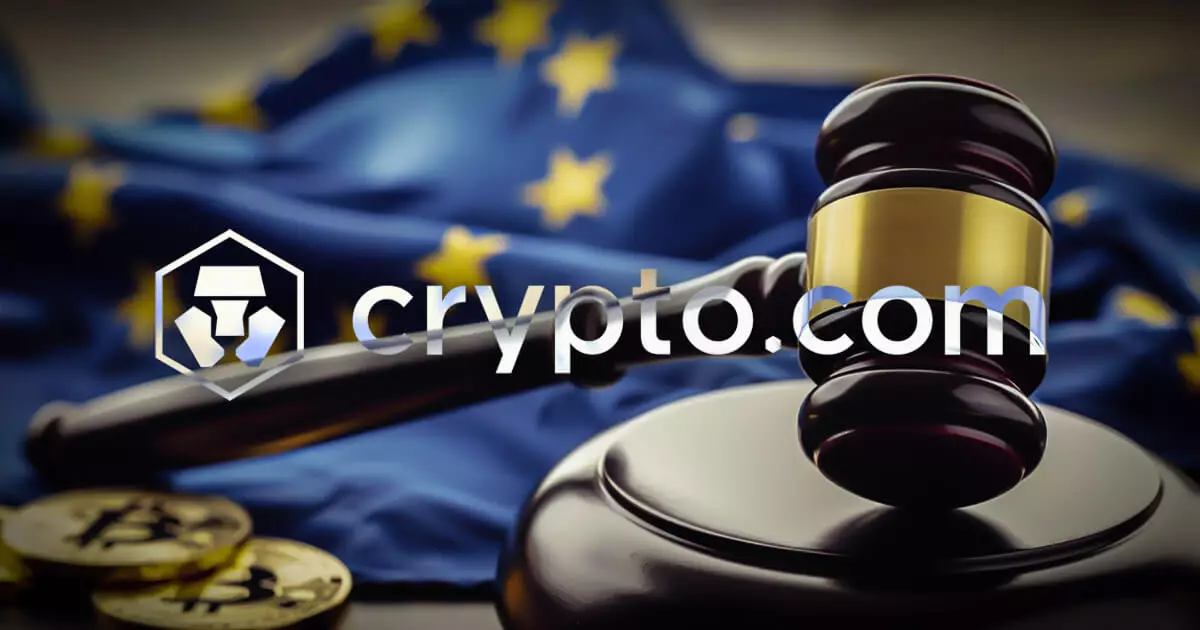In a significant shift in its operations, Crypto.com has announced that it will remove Tether’s USDT stablecoin and nine other cryptocurrencies from its trading platform by January 31. This move aligns with the new Markets in Crypto-Assets (MiCA) regulations set forth by European authorities, aiming to create a controlled and transparent environment for cryptocurrency operations in the European Economic Area (EEA). By undertaking this action, Crypto.com illustrates its commitment to adhering to stricter regulatory frameworks while fostering consumer protection and financial integrity within the crypto space.
The tokens facing delisting alongside USDT include Wrapped Bitcoin (WBTC), DAI, Pax Dollar (USDP), PayPal USD (PYUSD), Crypto.com’s own Staked ETH (stETH), Staked SOL (stSOL), Liquid Cronos (LCRO), and XSGD. After the termination date of January 31, users will be given a grace period until March 31 to withdraw their assets. Any assets left in user accounts beyond this deadline are set to be automatically switched to a MiCA-compliant stablecoin or another asset that holds equivalent market value. This transition not only reflects the urgency to comply with new regulations but also highlights the exchange’s proactive approach to protecting its clients.
The Regulatory Landscape and Its Challenges
The MiCA regulation emphasizes high reserve requirements and financial accountability for stablecoins, increasing transparency and minimizing risks for consumers. These measures, while beneficial in protecting users, pose significant challenges for prevalent stablecoins like USDT, which is currently the largest stablecoin by market capitalization. Tether, the company behind USDT, has voiced concerns regarding the potential systemic risks that such stringent requirements could impose on both traditional banking systems and the digital asset landscape. As the regulation rolls out, the crypto world must brace itself for a significant recalibration of operational standards.
In an attempt to navigate these regulatory changes, Tether is investing in projects that emphasize compliance with European standards. Initiatives such as Quantoz and StablR—focused on developing euro-based stablecoins—aim to ensure that Tether remains a viable player in the changing landscape. Tether’s proactive investments signal a recognition of the importance of aligning with regulations to maintain market relevance and user trust.
Crypto.com’s Regulatory Triumph
Crypto.com’s decision is further underscored by its recent achievement of regulatory approval from the Malta Financial Services Authority (MFSA) on January 27. This milestone positions the exchange as one of the pioneering platforms authorized to operate under the stringent MiCA framework throughout Europe. By obtaining this approval, Crypto.com not only enhances its reputation as a trustworthy platform but also ensures compliance with evolving regulatory standards, ultimately aiming to provide its users with a safer, more reliable trading environment.
The measures taken by Crypto.com indicate a transformative era in the crypto market, where compliance and user protection will be at the forefront. As the industry adapts to these regulatory shifts, it will be crucial for stakeholders to seek innovation through compliance, ensuring a balanced coexistence between technological advancement and necessary oversight.















